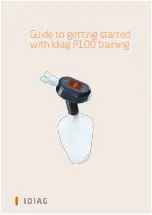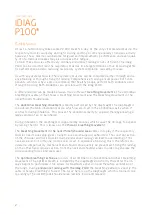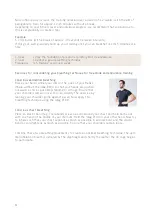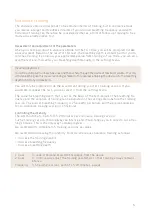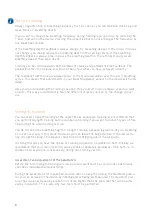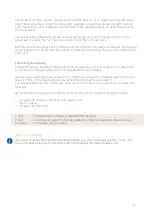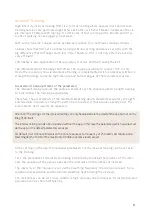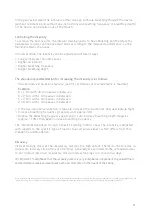
9
In the pauses between the intervals, either one can continue breathing through the device
(without resistance and without any instructions on breathing frequency or breathing depth)
or the device can be taken out of the mouth.
Controlling the intensity
To achieve the best results, the interval training needs to be exhausting and therefore the
parameters require continuous adjustment according to the improved performance, so the
training remains strenuous.
In interval mode, the intensity can be adjusted in different ways:
1.
Longer intervals / shorter pauses
2.
Higher resistances
3.
Higher breathing frequency
4.
Bigger breathing depth
The standard recommendation for increasing the intensity is as follows:
1.
Increase interval duration stepwise (until 4 x 4 minutes at low resistance is feasible)
Example:
8 x 1 min with 30 sec pauses in between
6 x 2 min, with 1 min pauses in between
5 x 3 min, with 1 min pauses in between
4 x 4 min, with 1 min pauses in between
2.
If the desired interval duration is feasible, increase the resistances (low
→
middle
→
high)
3.
Increase breathing frequency (stepwise until approx. 34)
4.
Reduce the breathing frequency again and in turn increase breathing depth stepwise
(approx. +10%), then again increase breathing frequency
The interval mode allows for sport-specific training. In most cases the intensity is adjusted
with regards to the specific type of load or to a certain weakness, which differs from this
standard recommendation.
Recovery
Interval training stresses the respiratory muscles to a high extent. Therefore, the muscles re-
quire more recovery time after such trainings. Generally, we recommend the «standard» user
to not conduct intensive respiratory muscle interval trainings on consecutive days.
It is important to emphasize that the recovery process is very individual and dependent on general fitness
and performance levels and eventually each user must listen to the needs of their body.
In rare instances training using the Idiag P100 may cause dizziness, shortness of breath, headaches, nausea or vestibular disorders. If negative symptoms occur, training with the Idiag P100 must be
stopped immediately. The user assumes full responsibility for his training. Idiag accepts no liability whatsoever for any consequences arising from training using the Idiag P100.

